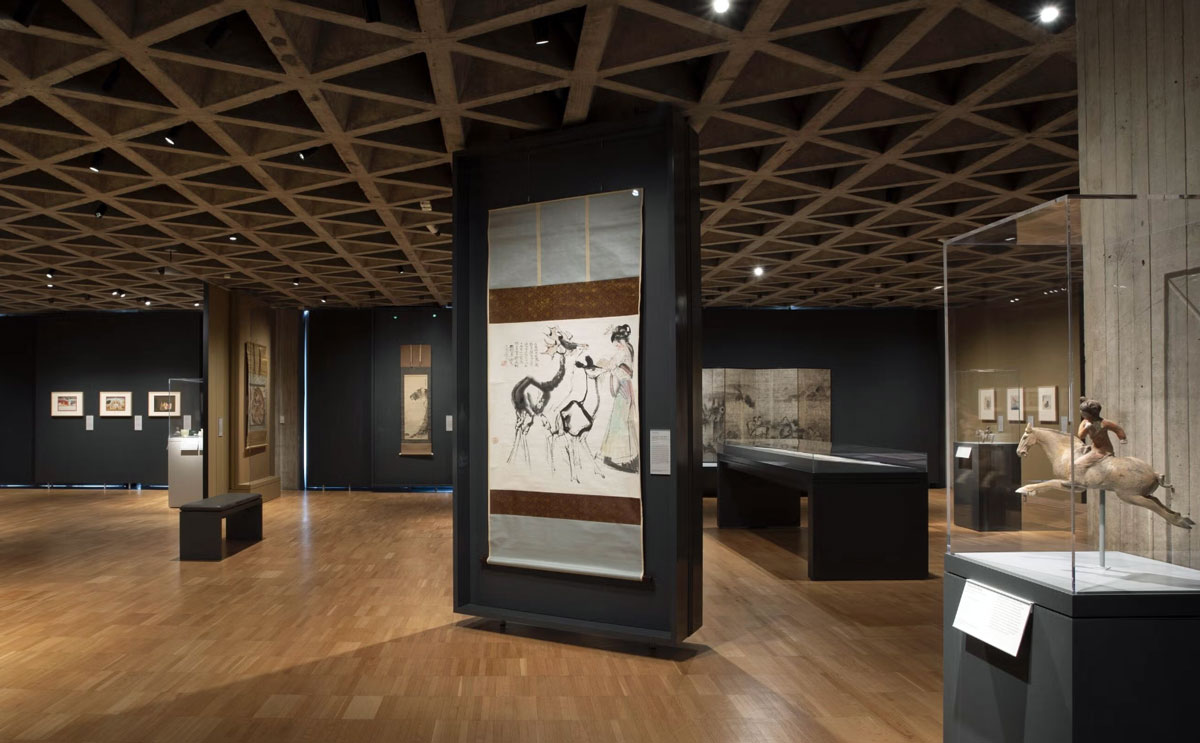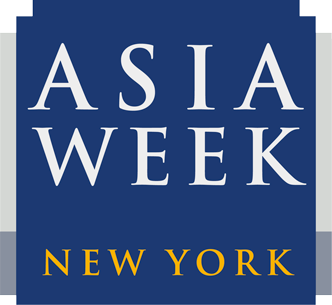
Installation view, Role of Animals and Literary Themes in Asian Art, Yale University Art Gallery
Role of Animals and Literary Themes in Asian Art
Through May 1, 2025
The Yale University Art Gallery is pleased to open the current rotation of Asian paintings and textiles in their permanent collection, Role of Animals and Literary Themes in Asian Art. Exploring the role of animals in Chinese, Korean, and Japanese art, the exhibition focuses on the 12 animals of the zodiac. As symbols of steadfastness, power, and beauty, horses feature prominently in the display. They appear in an 18th- or 19th-century Japanese screen brushed by a member of the Kano school—the official artists of the Tokugawa shogunate—while a lone horse is the subject of a hanging scroll by the famed 20th-century Chinese painter Xu Beihong. These works are juxtaposed with a rare Korean vessel in the shape of a horse and rider, dating from the 7th or 8th century. Another example of ceramic sculpture, this one from 8th-century China, takes the form of a woman playing polo.
Elegant paintings from India and Iran illustrate some of the most influential literary themes in West and South Asian culture. Among these are scenes from the life of the Hindu god Krishna as recounted in the epic Bhagavata Purana (Tale of the Lord), as well as the romantic tales of King Bahram Gur from the Haft Peykar (Seven Portraits) by the great 13th-century Iranian poet Rumi. Also included in this section of the galleries are metalwork, ceramic, and glass pieces, alongside a 17th-century Iranian tapestry depicting a hunting scene.
To browse the works on view, click here.
